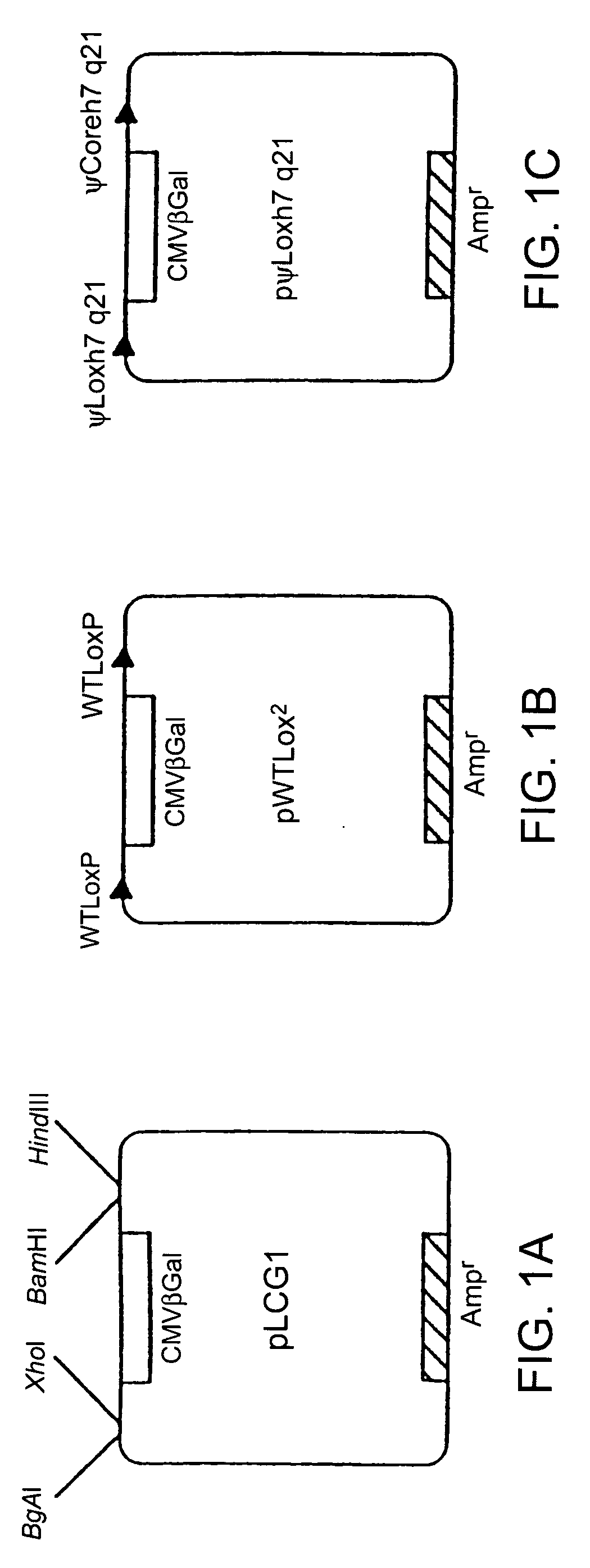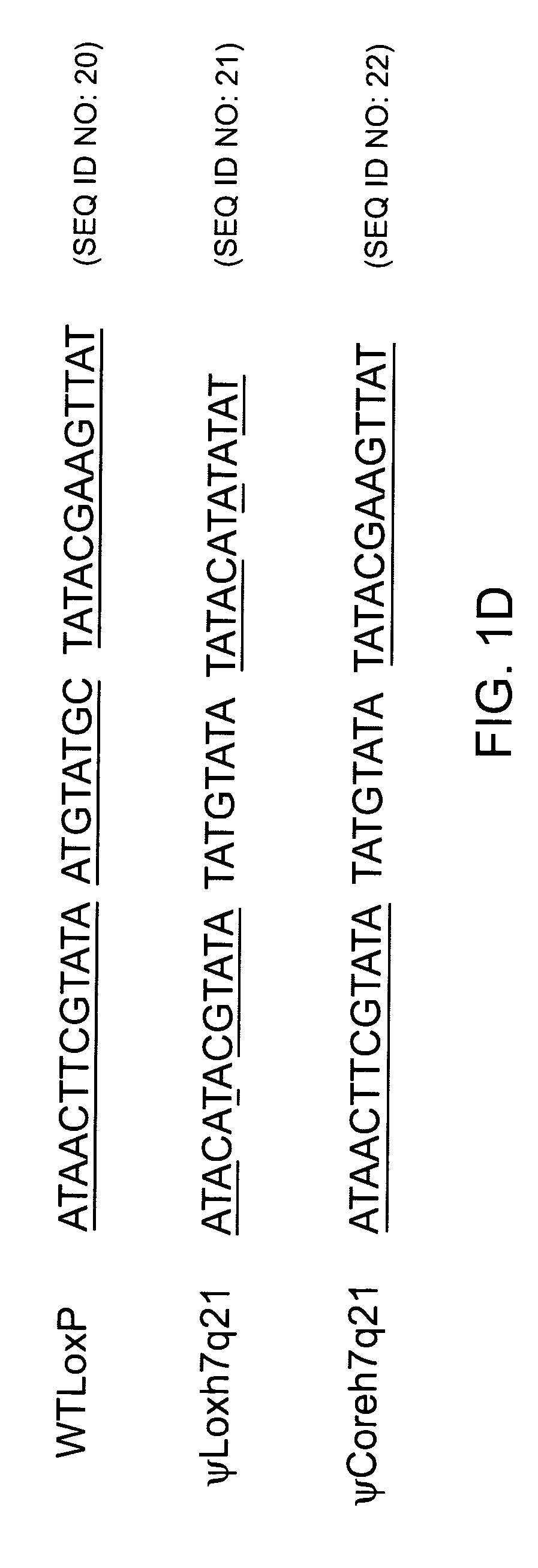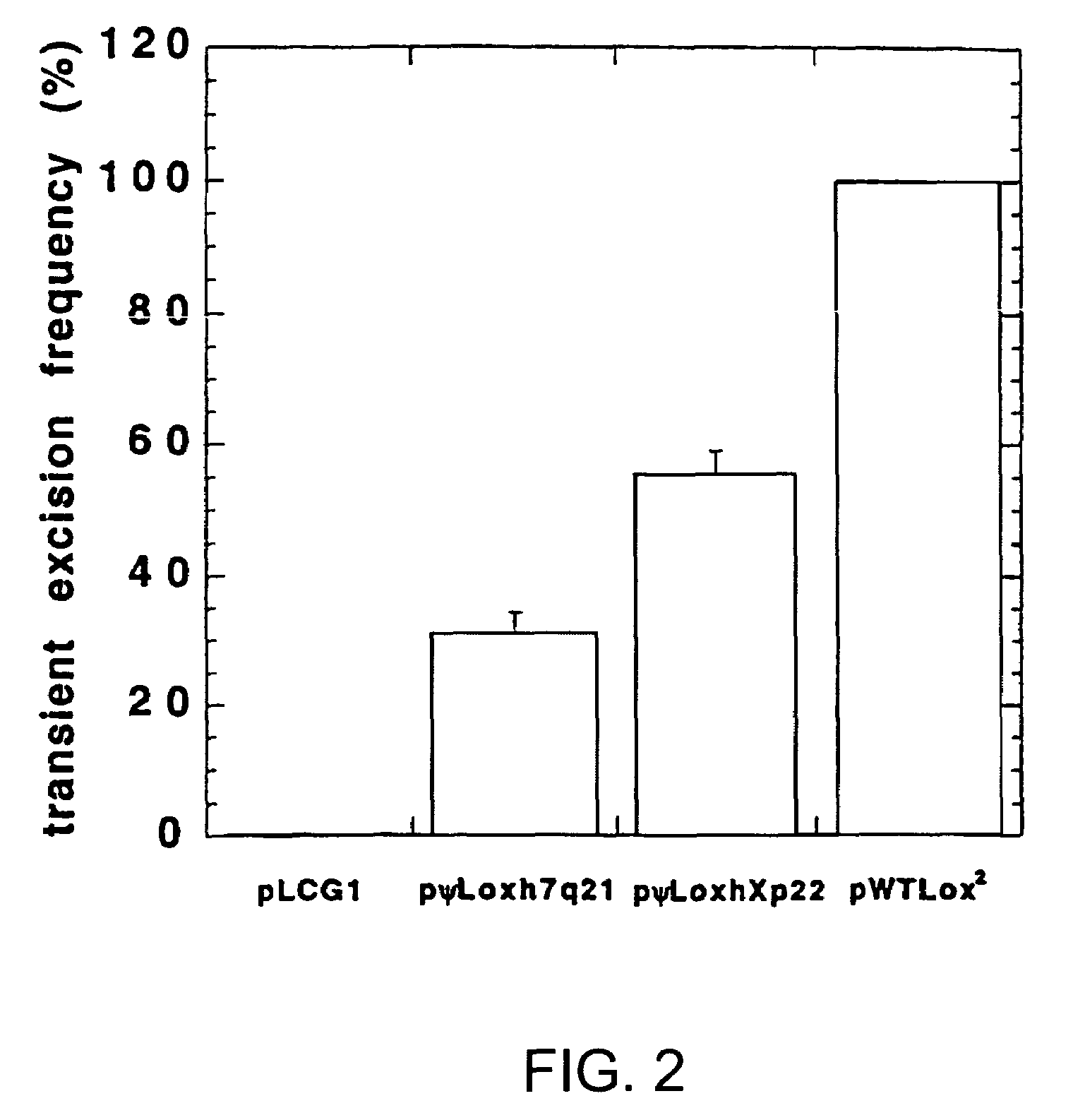Methods and compositions for genomic modification
a technology of genomic modification and composition, applied in the field of biotechnology, can solve the problems of limiting the usefulness of the technique, undesirable loss of control over the procedure, lack of permanence, etc., and achieve the effect of facilitating the production of a produ
- Summary
- Abstract
- Description
- Claims
- Application Information
AI Technical Summary
Benefits of technology
Problems solved by technology
Method used
Image
Examples
example 1
Identification of Pseudo-recombination Sequences
[0162]The following example describes the identification of pseudo-loxP sequences by computer search. Similar procedures can be used to identify other pseudo-recombination sequences.
[0163]The findpatterns algorithm of the Wisconsin Software Package Version 9.0 developed by the Genetics Computer Group (GCG; Madison, Wis.), was used to screen all sequences in the GenBank database (Benson et al., 1998, Nucleic Acids Res. 26, 1-7). Default parameters are given below. Patterns resembling the wild-type loxP sequence, called pseudo-loxP sites (ψlox) herein, were sought. The results from two different search strategies (Patterns #1 and #2, see below) were pooled.
[0164]The wild-type loxP site is 34 base pairs long and consists of two identical thirteen-basepair palindromes, separated by an eight-basepair core. It has been demonstrated that, while strand cutting and exchange take place in the eight-basepair core, the DNA sequence of most of this...
example 2
In vitro Excision Assay of Pseudo-lox Sites in Bacteria and Human Cells
[0170]The following example demonstrates that the pseudo-recombination sequences of the invention are functional as sites for recombination of a nucleic acid sequence by a site-specific recombinase.
[0171]A negative control plasmid, pLCG1 (FIG. 1A), was created by inserting a 4.3-kb XbaI-BspHI fragment containing the lacZ gene, encoding β-galactosidase, driven by the CMV promoter (from pCMVSPORT-βgal, Gibco / BRL) into the EcoRV site of pLitmus29 (New England Biolabs, Beverly, Mass.) in the opposite orientation to the LacZα gene already present in the plasmid. This plasmid was then used as a base for the construction of other plasmids used in the excision assay. A very similar negative control plasmid, pL2β50, was used in some of the experiments in place of pLCG1. Briefly, annealed oligonucleotides containing the lox sites being tested and a marker restriction enzyme site were directionally cloned into the BamHI-Hin...
example 3
In Vitro Transient Integration Assay of Pseudo-lox Sites in Human Cells
[0183]The following example provides a model system for assessing the ability of the pseudo-recombination sequences of the invention to promote genomic modification by site-specific insertion.
[0184]The ψlox site to be tested was placed on a plasmid having tetracycline resistance (FIG. 3, upper left). This plasmid represented the chromosome and was the recipient for integration events. A lox site having the wild-type loxP palindromes and the 8-bp core of ψlox h7q21 was placed next to the lacZ gene on a second plasmid, this one having ampicillin resistance (FIG. 3, upper right). This plasmid represented the incoming donor vector. These plasmids were constructed as follows: The plasmid pTM1 was generated by cloning a 155 base-pair AflIII-SnaBI fragment from pLitmus29 containing the multiple cloning site into a unique EcoRV site of pUC-Tet, a tetracycline resistant derivative of pUC19 (C. R. Sclimenti and M.P.C., unp...
PUM
| Property | Measurement | Unit |
|---|---|---|
| resistance | aaaaa | aaaaa |
| capacitance | aaaaa | aaaaa |
| volume | aaaaa | aaaaa |
Abstract
Description
Claims
Application Information
 Login to View More
Login to View More - R&D
- Intellectual Property
- Life Sciences
- Materials
- Tech Scout
- Unparalleled Data Quality
- Higher Quality Content
- 60% Fewer Hallucinations
Browse by: Latest US Patents, China's latest patents, Technical Efficacy Thesaurus, Application Domain, Technology Topic, Popular Technical Reports.
© 2025 PatSnap. All rights reserved.Legal|Privacy policy|Modern Slavery Act Transparency Statement|Sitemap|About US| Contact US: help@patsnap.com



